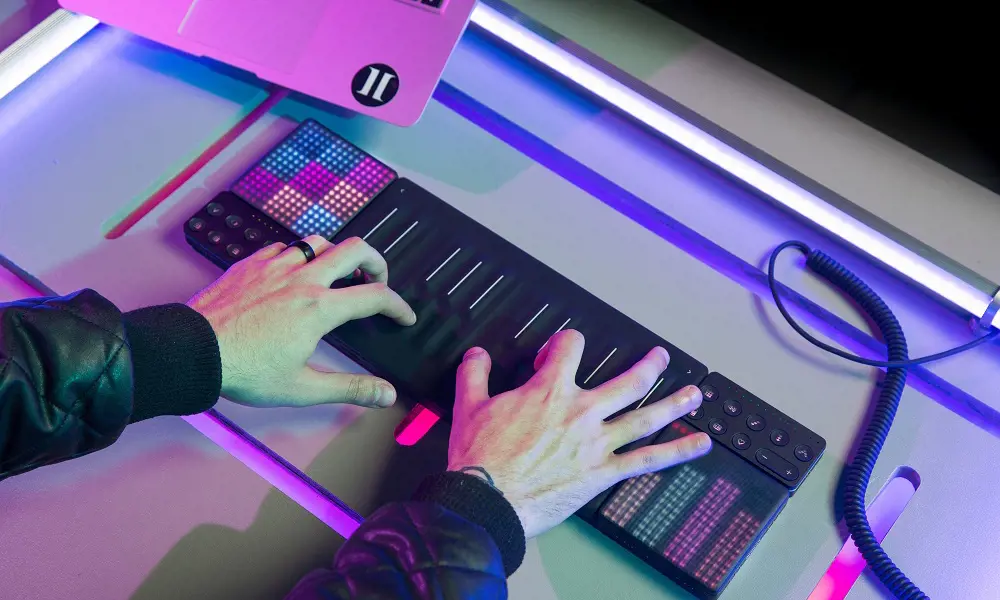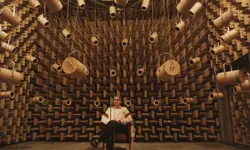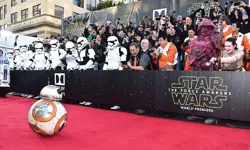
A new way to make music
In 2009, designer, musician and inventor Roland Lamb was studying at the Royal College of Art when he decided to create a digital musical instrument that did not have the limitations of a keyboard, for example only producing one note at a time, but still had an acoustic feel.
Using his Seaboard design, musicians can play between the ‘keys’ of a keyboard to produce a wide range of sounds, which are all entirely digital. It has a tactile and pliable silicone coating that allows people to play it easily in sweeping and sliding strokes. Different pressures affect the sounds, and different parts of the keys can be pressed to change notes. For example, it can simulate the effect of wiggling a figure on a guitar string to create different notes.
Different pressures affect the sounds, and different parts of the keys can be pressed to change notes. For example, it can simulate the effect of wiggling a figure on a guitar string to create different notes.
The design consists of a top layer of silicone (similar in consistency to a wetsuit or stress ball) that is stacked on top of a sensor board. The silicone diffuses pressure from the player’s touch to activate sensors beneath the silicon that transform touch into sound. Each sensor corresponds to different notes or tones and sends messages in MIDI (Musical Instrument Digital Interface – the computer language that allows computers and digital instruments to communicate) to pass the sounds through the speakers in a matter of milliseconds.
Lamb worked with a team of electronic, software, design, sound, and quality assurance engineers to perfect the range of products that make up his ROLI line. It has various instruments, including the piano-like Seaboard, as well as ‘Blocks’ that can be used in a similar way to drums. The software works with desktops and smartphones via Bluetooth.
While sensors and high-performance silicone are used in many products, combining both and integrating them with MIDI software was a challenge. The team spent four years on research and development between the original sketch and launching the first commercial product, creating prototypes and experimenting with suppliers and components.
World famous musician and record producer Pharrell Williams (who has invested in ROLI and is also its Chief Creative Officer), Stevie Wonder and Hans Zimmer are among its users, and Ryan Gosling’s character in La La Land plays a Seaboard
As well as engineering a suitable surface, one of the biggest challenges was changing people’s perceptions about what a musical instrument is – music has been written for certain instruments for hundreds of years. Getting the instruments in the public eye was essential. World famous musician and record producer Pharrell Williams (who has invested in ROLI and is also its Chief Creative Officer), Stevie Wonder and Hans Zimmer are among its users, and Ryan Gosling’s character in La La Land plays a Seaboard. Several schools have integrated the instruments into their curriculums, with primary and secondary schools, and universities using them. The company is keen to teach children young, before they have preconceptions of what an instrument is. Tens of thousands of people now own and play ROLI instruments, and the number is growing every year.
***
This article has been adapted from "A new way to make music", which originally appeared in the print edition of Ingenia 77 (December 2018).
Keep up-to-date with Ingenia for free
SubscribeRelated content
Arts & culture

How to maximise loudspeaker quality
Ingenia asked Dr Jack Oclee-Brown, Head of Acoustics at KEF Audio, to outline the considerations that audio engineers need to make when developing high-quality speakers.

Engineering personality into robots
Robots that have personalities and interact with humans have long been the preserve of sci-fi films, although usually portrayed by actors in costumes or CGI. However, as the field of robotics develops, these robots are becoming real. Find out about the scene-stealing, real-life Star Wars droids.

Design-led innovation and sustainability
The Stavros Niarchos Foundation Cultural Center, the new home of the Greek National Opera and the Greek National Library, boasts an innovative, slender canopy that is the largest and most highly engineered ferrocement structure in the world.
The technology behind ‘The Tempest'
William Shakespeare’s The Tempest is a fantastical play that features illusion and otherworldly beings. Discover how cutting-edge technology, such as motion capture and sensors, has brought the magic and spectacle to life on stage.
Other content from Ingenia
Quick read

- Environment & sustainability
- Opinion
A young engineer’s perspective on the good, the bad and the ugly of COP27

- Environment & sustainability
- Issue 95
How do we pay for net zero technologies?
Quick read

- Transport
- Mechanical
- How I got here
Electrifying trains and STEMAZING outreach

- Civil & structural
- Environment & sustainability
- Issue 95